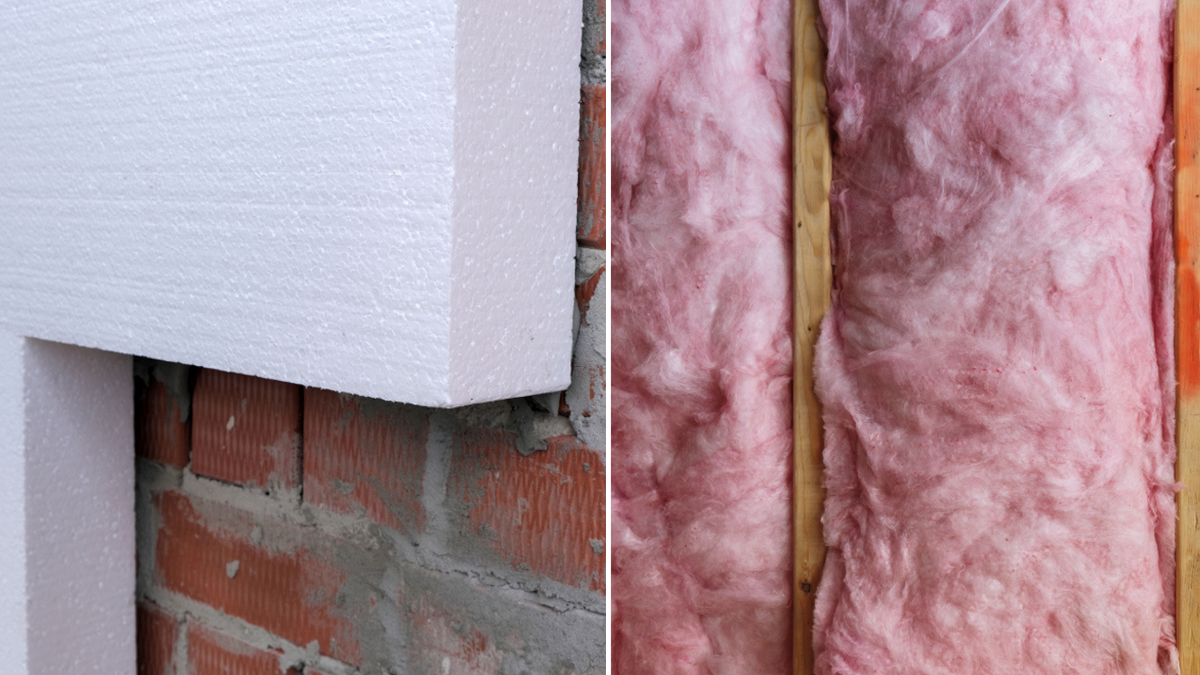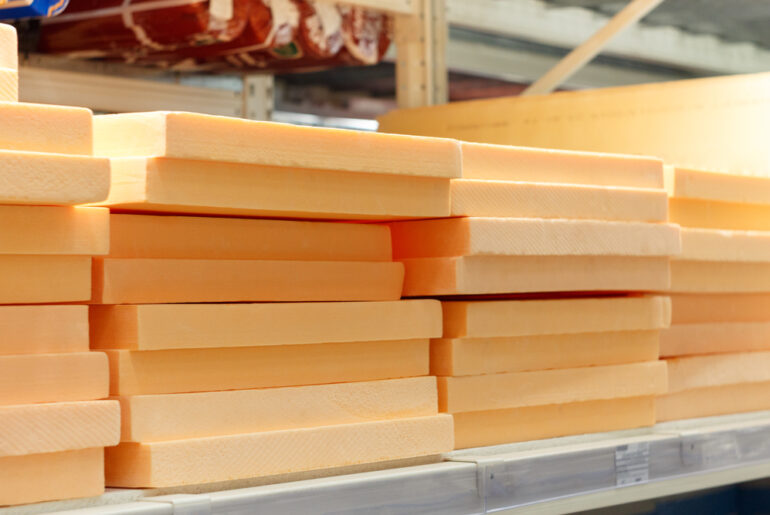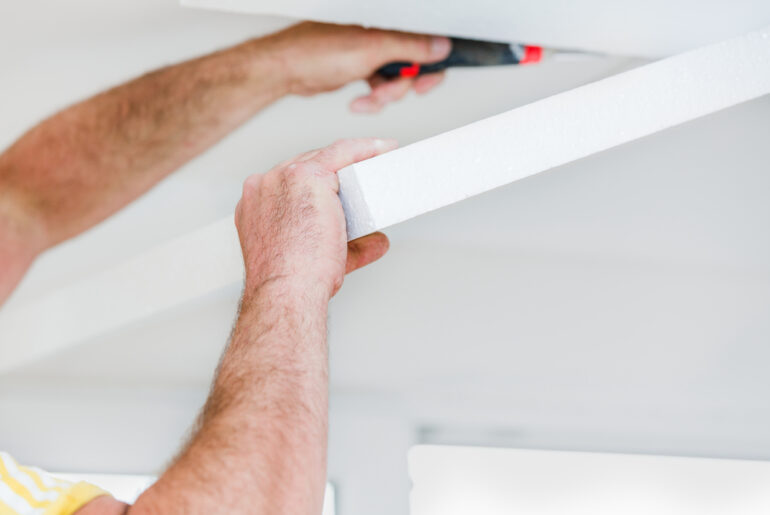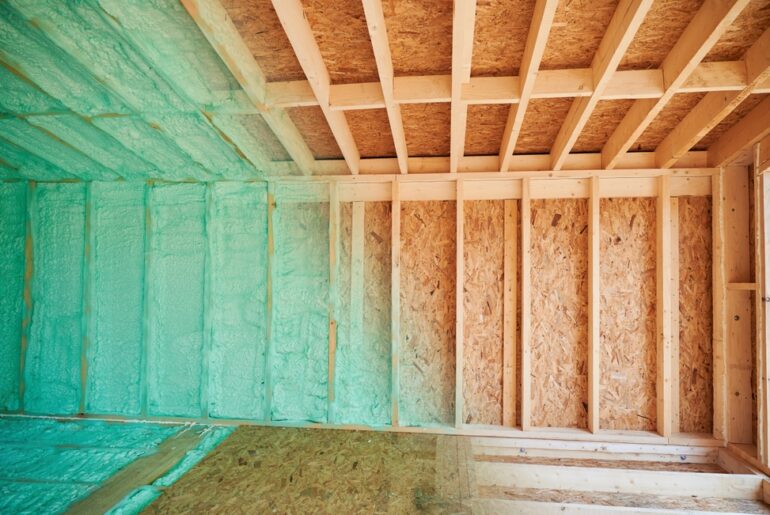When shopping for insulation for your home or residential property, you will notice that the majority of home improvement stores carry two main types of insulation — fiberglass and rigid foam. You may think these two are interchangeable, and there is some overlap, but they both have unique qualities that make them more suitable for specific uses.
For instance, when insulating between the studs in your walls, you may want to opt for fiberglass batts. However, if you are worried about moisture in your basement, rigid foam insulation will be the more appropriate choice.
Let’s take a closer look at these two types of insulation and see where they compare and where they differ.
Fiberglass Insulation: General Overview
The majority of homes (and many commercial buildings) built in the U.S. use fiberglass, an insulation material made of incredibly thin glass fibers. Fiberglass insulation typically comes in a loose-fill form or in batts. Walls, floors, and ceilings can all be insulated with fiberglass, as it can be set in place between beams, joists, and studs.
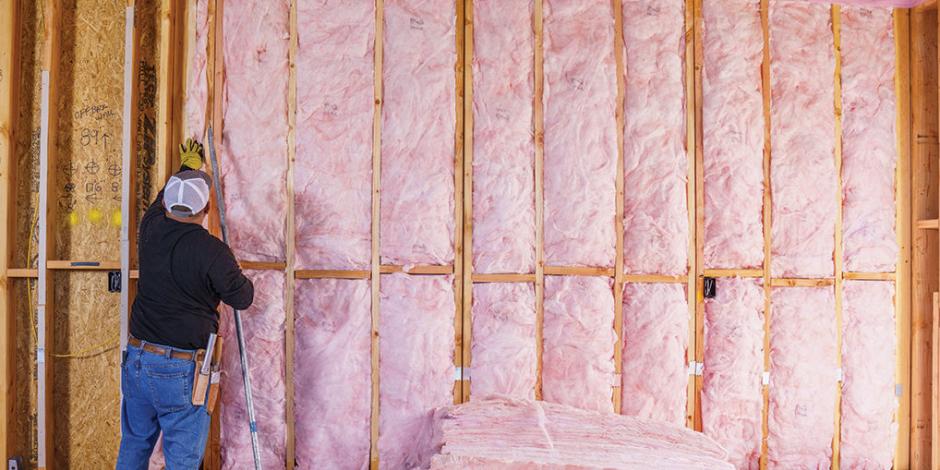
Insulation made of fiberglass is frequently installed in unfinished walls, floors, and ceilings. Additionally, it can be used to insulate ducts and tank-style water heaters. Fiberglass insulation isn’t watertight due to its nature (though it does offer a certain degree of moisture resistance). As a result, you shouldn’t use it in foundations or any other locations where excessive moisture exposure poses a risk.
Key Characteristics:
- Cheap: Due to its ease of use, fiberglass makes it a more budget-friendly option than other insulation types.
- R-value: fiberglass insulation has an r-value that ranges from R-11 to R-38.
- DIY-friendly: Fiberglass batts are easy to install, can be cut with a utility knife, and are flexible enough to fit around wires and pipes.
- Layerable: Fiberglass batts can be layered to increase the R-value.
How Is Fiberglass Insulation Made?
Molten glass is spun into fibers and covered with a liquid binder to create fiberglass. Then, the longer parts are divided into smaller ones. As the glass fibers cool, they fall onto a moving conveyor belt and build up into a jumbled mass.
The conveyor transports the tangled fiberglass blanket through the curing ovens. Once cured, the batts are then chopped to the required length and width. A binding agent is used to create batts but not loose-fill.
Rigid Foam Insulation: General Overview
Ordinarily used on the roof and exterior walls, rigid foam insulation — also called continuous insulation or foam board insulation — acts as a continuous insulation layer. Less energy is wasted through the framing when rigid foam insulation is installed. As a result, energy bills go down, and comfort level in the home goes up.
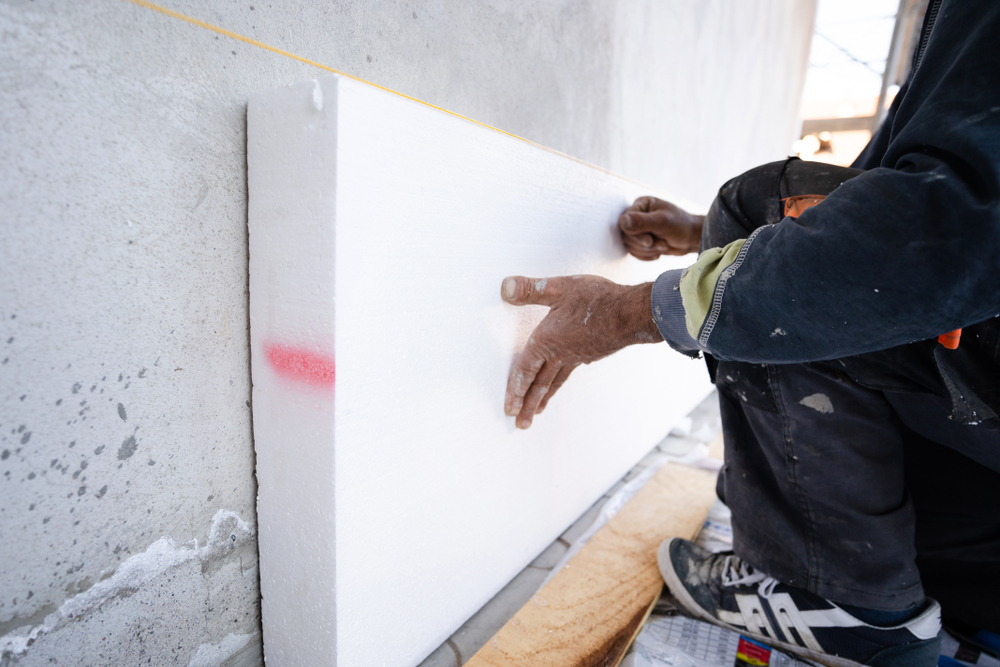
Rigid foam is more durable and doesn’t move out of place after installation compared to batt insulation or blown insulation. It is also water and insect-resistant, so crawl spaces and basements frequently employ it. If the boards are correctly sealed at the edges and joints, they can also act as an air barrier.

Key characteristics:
- Cheap. Why it’s cheap and why it matters, or how to use that to your advantage
- R-value: R-values range from R-1 to R-15.
- Less irritating: No need to fully suit up and protect yourself, though you should always wear a dust mask.
What Rigid Foam Made Of
Extruded polystyrene, expanded polystyrene, or premium, environmentally friendly polyisocyanurate are the three materials typically used in rigid foam insulation.
Polystyrene is a colorless, transparent thermoplastic, and a thermosetting, closed-cell plastic foam with low conductivity and no hydrochlorofluorocarbons is known as polyisocyanurate. Insulation foam made of polyurethane comes in open- or closed-cell varieties. Reflective foil in front of an open area can also serve as a radiant barrier.
What Is Styrofoam?
A lot of things people think are Styrofoam are actually polystyrene. Styrofoam — a trademarked XPS or closed-cell extruded polystyrene foam — is owned and manufactured by The Dow Chemical Company.
Styrene, a material derived from petroleum, is used to make Styrofoam. Styrene is transformed into polystyrene through polymerization, and then a hydrofluorocarbon agent is added. Then, this mixture is extruded, allowing it to expand under pressure until it transforms into a foam board.
Styrofoam vs. Rigid Foam: Know The Difference
Styrofoam is a blue-colored extruded polystyrene (XPS) foam used in building, crafts, and thermal insulation. Expanded polystyrene, or EPS, is a material that can be used for a variety of applications.
EPS can be cut or molded into a multitude of shapes, and the applications are virtually limitless. It can be used for nearly anything from a take-out box to retaining walls. You’ll find EPS stage props, drinking cups, and helmets!
Rigid Foam vs Fiberglass: Installation
When it comes to installation, rigid foam and fiberglass both have advantages and disadvantages. The fundamental benefit of rigid foam is that it is a sterile, allergen-free product. Fiberglass has the benefit of being adaptable enough to shape around obstacles.
Rigid Foam Installation
With a sharp saw or a utility knife, rigid foam may be scored and snapped like drywall. Although you should always wear a dust mask, you do not need to totally protect yourself against fibers as you would with fiberglass.
Rigid foam is stiff; therefore, it won’t fit around objects in the wall like wires, outlet boxes, or bracing. To fit around such obstacles, the foam must be precisely trimmed. Expandable foam or caulking may be required to bridge tiny gaps between stiff foam and the frame because it is challenging to achieve a tight seal with rigid foam alone.
Fiberglass Installation
Fiberglass insulation may be cut with a pair of sharp scissors or a utility knife and is flexible enough to fit around vents, wires, and wall bracing. It should be stapled to the studs to keep it in place.
The skin, eyes, and lungs can become irritated by fiberglass insulation. Therefore, it’s crucial to use a respirator rather than a dust mask to protect yourself, along with eye protection, gloves, long sleeves, and pants.
Which One is Easier to Install?
While it may be a pain to don the protective gear, fiberglass insulation is still easier to install overall. It cuts easily and is flexible around the obstructions like pipes and wires. Plus, it can be stapled to studs instead of needing to be sealed with caulking.
Rigid Foam vs Fiberglass: R-Value
R-value, a measurement of the material’s thermal resistance, is used to compare the insulating qualities of various building materials. Better insulating properties are indicated by higher R-values.
Rigid foam’s R-value is higher per cubic inch than that of fiberglass insulation. However, the thickness of the insulating material has a significant impact on the R-values for both rigid foam and fiberglass.
Rigid Foam R-Value
Rigid foam’s R-value ranges from R-1 for 1/4-inch thick sheathing panels to R-15 for 3-inch thick panels. Thickness isn’t the only factor, however. Facing material and the kind of foam used will have an impact on the R-value, although it may be negligible in some cases.
Fiberglass R-Value
Fiberglass R-values range depending on the thickness of the batt, and high-density options will have slighter higher R-values.
R-values for the most common thicknesses:
- 3 1/2 inches: R-11
- 6 to 6 1/4 inches: R-19
- 8 to 8 1/2 inches: R-25
- 9 1/2 inches: R-30
- 12 inches: R-38
Which One is More Energy Efficient?
Rigid foam might be your first option if saving energy is your top priority and there are no other contributing elements like dampness. Plus, rigid foam combats thermal bridging. Thermal bridging can occur when heat escapes from a house through more conductive materials like beams or studs.
When interior insulation breaks where it meets other construction components, such as studs, thermal bridging occurs. Rigid foam board insulation is installed by contractors on the exterior of the building, which by its very nature inhibits thermal bridging.
Rigid Foam vs Fiberglass: Costs
When comparing R-value per square foot prices, rigid foam insulation costs quite a bit more. Fiberglass insulation will cost you less than half as much.
For instance, R-15 fiberglass insulation costs roughly $3.40 to $4.00 to insulate a 10-square-foot wall space. Rigid foam with a comparable R-value runs about $10.
Furthermore, fiberglass insulation can be installed with less waste. When the stiff foam is trimmed to size, it results in tiny fragments and thin sections that are essentially useless. Very little of the fiberglass insulation is wasted since it may be pulled apart and stuffed into small spaces.
If you hire someone to install your fiberglass insulation, you can expect labor and supply costs to cover 500 square feet to range between $300 and $700, depending on where you live. Rigid foam installation costs for the same square footage will run between $400 and $950.
If correctly installed, rigid foam can last up to 100 years due to its firmness, so you probably won’t have to replace it for the entire time you live at the property. On the other hand, fiberglass insulation has a life span of 80-100 years for batts and up to 20 years for loose-fill fiberglass insulation.
Rigid Foam vs Fiberglass: Safety
Toxicity
The dangerous flame retardant HBCD, which was outlawed by the European Union in 2015, is present in the majority of rigid polystyrene foam insulation boards, both EPS and XPS varieties. The Environmental Protection Agency warns that HBCD poses a risk to human health because of the effects it has on animal reproduction, development, and neurological function. However, the risks the chemical poses are mostly during production or during disposal.
After reviewing research on fiberglass manufacturing employees, the National Academy of Sciences came to a conclusion in 2000 that “glass fibers do not appear to raise the incidence of respiratory system cancer.” It is not categorized as a human carcinogen.
Fiberglass insulation will cause temporary irritation, however. Breathing in fiberglass dust may cause your respiratory system to respond with nasal bleeding and intense coughing. It can also make your asthma or bronchitis worse. Direct contact with fiberglass insulation can also cause skin irritation and eye inflammation.
Mold
Both rigid foam insulation and fiberglass insulation are mold resistant because they do not contain organic material that mold can use for growth. Some paper backings on the batts can allow mold to form, however.
Pests
Rigid foam insulation does not attract termites or carpenter ants as it provides no food for them. However, it does not act as a barrier for insects because they can easily penetrate it.
Fiberglass insulation does not attract termites, but it can become home for rats as they like to burrow and nest inside the batts.
Installation Safety
Rigid foam board is safer to install as you do not need full protective gear to keep you safe. A dust mask is enough to keep you from feeling much irritation. Fiberglass, on the other hand, is highly irritating and requires full safety gear.
Rigid Foam vs Fiberglass: Fire Resistance
Insulation — no matter the type — is either naturally fireproof or has been treated with a fire retardant to prevent flammability. No matter the material, it is still combustible after extreme temperature, however.
For the entirety of the product’s life, fiberglass insulation won’t catch fire (apart from extreme temperatures) and won’t need to be treated with further chemical fire retardants. However, some fiberglass facings (mostly those made of kraft paper and foil) are flammable but won’t provide a fire hazard if placed according to code with a barrier.
Polystyrene and polyisocyanurate rigid foam insulation is advantageous because it resists electrical currents and is generally treated with fire retardants to make it inflammable. The foil facings on rigid foam board insulation also add to its flame resistance. However, extreme temperatures can lead to the foam catching fire, and the fumes released from the burning foam can be toxic.
Rigid Foam vs Fiberglass: Common Applications
Due to its adaptability and efficiency, fiberglass is one of the most popular types of insulation for homes.
Fiberglass batts are frequently used in attics and exterior walls because they effectively stop heat from escaping through ceiling and wall panels. In order to insulate curved or uneven architectural features, loose-fill fiberglass is easy to install.
Compared to fiberglass, rigid foam boards are more moisture-resistant. Due to this fact, they are widely used to insulate kitchens, basement walls, and other humid regions in homes. Rigid foam boards lack flexibility, however, making them unsuitable for insulating structures like domes or arches. They are also not that efficient at insulating walls with lots of obstructions like plumbing or electrical boxes.
Rigid Foam vs Fiberglass: Unique Benefits
There are other benefits to fiberglass insulation that don’t have anything to do with its R-value or its impact on your electric bill. Fiberglass excels at obstructing sound! The acoustics in your home will remain clear even if your neighbors are noisy or your HVAC system won’t stop humming. Rigid foam doesn’t block sound, but it does absorb it cutting out reverb.
Fiberglass is also eco-friendly. It naturally conserves non-renewable fuel sources because it is made out of glass, sand, and other recycled components. It’s among the market’s best insulation products for the environment.

